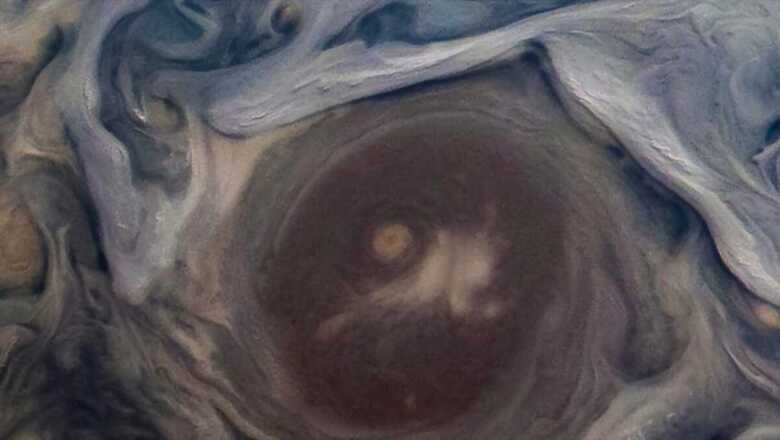
views
Nasa’s Juno mission captured storms raging on planet Jupiter in stunning photos revealing new information about the largest planet in our solar system. Storms on Jupiter are one of the most prominent features of the gas giant as they can last for centuries with winds exceeding 643 kilometers per hour.
Juno’s space mission has been observing these storms for the past eight years. Juno mission, launched in 2011, is Nasa’s attempt at understanding Jupiter’s atmosphere, magnetic field and interior structure as well as its up-to-95 officially recognized moons. It arrived near the planet in 2016.
Juno’s photos were shared on Instagram via Nasa. “Juno imaged this storm within Jupiter’s iconic banded jet streams as it flew 8,000 miles (13,000 km) above the gas giant’s clouds. These turbulent jet streams are composed of ammonia and water. They crisscross the planet’s atmosphere, which is mostly hydrogen and helium,” Nasa said in the Instagram post accompanying the photos.
Jupiter was most likely the first planet to form and contains most of the gases and dust that were not incorporated into the Sun, according to a report by SciTechDaily.
Juno – the first solar-powered mission in the outer solar system – earlier this year also captured stunning photographs of the Great Red Spot, a massive anticyclonic storm that has been raging for centuries. This storm is larger than Earth.
The Great Red Spot on Jupiter has been observed for at least 400 years, making it one of the most enduring and prominent features of the planet’s atmosphere. Its exact age is not precisely known, but records of its existence date back to the 17th century.
A report by the New York Post said that the Great Red Spot has been shrinking since it was last measured by the Voyager spacecraft in 1979. The height of the storm has diminished by an eighth while the width has decreased by a third over the past 40 years, images released by Juno earlier this year of the huge anticyclone revealed.














Comments
0 comment